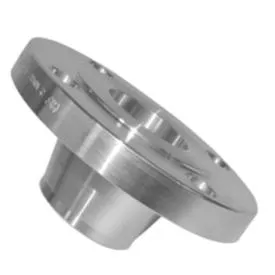-
Cangzhou Yulong Steel Co., Ltd.
-
Phone:
+86 13303177267 -
Email:
admin@ylsteelfittings.com
- English
- Arabic
- Italian
- Spanish
- Portuguese
- German
- kazakh
- Persian
- Greek
- French
- Russian
- Polish
- Thai
- Indonesian
- Vietnamese
- Zulu
- Korean
- Uzbek
- Hindi
- Serbian
- Malay
- Ukrainian
- Gujarati
- Haitian Creole
- hausa
- hawaiian
- Hebrew
- Miao
- Hungarian
- Icelandic
- igbo
- irish
- Japanese
- Javanese
- Kannada
- Khmer
- Rwandese
- Afrikaans
- Albanian
- Amharic
- Armenian
- Azerbaijani
- Basque
- Belarusian
- Bengali
- Bosnian
- Bulgarian
- Catalan
- Cebuano
- China
- China (Taiwan)
- Corsican
- Croatian
- Czech
- Danish
- Esperanto
- Estonian
- Finnish
- Frisian
- Galician
- Georgian
- Kurdish
- Kyrgyz
- Lao
- Latin
- Latvian
- Lithuanian
- Luxembourgish
- Macedonian
- Malgashi
- Malayalam
- Maltese
- Maori
- Marathi
- Mongolian
- Myanmar
- Nepali
- Norwegian
- Norwegian
- Occitan
- Pashto
- Dutch
- Punjabi
- Romanian
- Samoan
- Scottish Gaelic
- Sesotho
- Shona
- Sindhi
- Sinhala
- Slovak
- Slovenian
- Somali
- Sundanese
- Swahili
- Swedish
- Tagalog
- Tajik
- Tamil
- Tatar
- Telugu
- Turkish
- Turkmen
- Urdu
- Uighur
- Welsh
- Bantu
- Yiddish
- Yoruba

Dec . 09, 2024 14:24 Back to list
pipe types
Understanding Pipe Types A Guide to Selection and Applications
Pipes are fundamental components in various industries, serving crucial roles in transporting fluids and gases. Whether in residential plumbing, industrial applications, or large-scale infrastructure projects, selecting the right pipe type is essential for efficiency, durability, and safety. This article aims to explore different pipe types, their characteristics, and their specific applications.
1. Materials and Their Properties
Pipes can be made from a variety of materials, each with unique properties that make them suitable for particular uses. The most common materials include
- PVC (Polyvinyl Chloride) Lightweight and resistant to corrosion, PVC pipes are often used in plumbing and irrigation systems. They are not suitable for high-temperature applications but excel in transporting potable water, chemicals, and waste.
- CPVC (Chlorinated Polyvinyl Chloride) Similar to PVC but with a higher temperature tolerance, CPVC is ideal for hot water applications. It is frequently used in residential and commercial plumbing systems and can withstand temperatures up to 200°F (93°C).
- Copper Known for its durability and natural antimicrobial properties, copper pipes are commonly used in plumbing, heating, and cooling systems. They are resistant to corrosion and can handle high temperatures, making them suitable for hot water applications.
- Steel (Black and Galvanized) Often used in industrial settings, steel pipes demonstrate high tensile strength and durability. Black steel is typically used for gas lines, while galvanized steel, coated in zinc, is used in plumbing to prevent rust.
- HDPE (High-Density Polyethylene) This flexible plastic pipe is resistant to corrosion and chemical degradation, making it suitable for both potable water and sewer applications. Its lightweight nature and resistance to impacts make it a popular choice for underground plumbing systems.
2. Key Pipe Types and Their Applications
Pipes can be categorized based on their application and structure
pipe types

- Pressure Pipes Designed to withstand internal pressure, these pipes are often used in water supply and gas distribution systems. Examples include PVC, CPVC, and steel pipes.
- Drainage and Sewer Pipes These pipes facilitate the movement of wastewater and are typically made from materials like PVC, ABS (Acrylonitrile Butadiene Styrene), and concrete.
- Irrigation Pipes Used in agriculture, these pipes transport water to fields and crops. Common types include PVC and HDPE, chosen for their flexibility and resistance to environmental factors.
- Fire Sprinkler Pipe Specific types of steel pipes are used in fire protection systems, providing the necessary strength and reliability to transport water under pressure during emergencies.
3. Choosing the Right Pipe Type
When selecting a pipe type, several factors must be considered
- Fluid or Gas to Be Transported The chemical composition, temperature, and pressure of the substance dictate material choice. Corrosive substances may require materials resistant to degradation.
- Installation Environment Pipes exposed to extreme temperatures, soil conditions, or physical stress must be appropriately selected to ensure longevity and performance.
- Cost and Availability Budget constraints and material availability can influence decision-making. While some materials may have a higher upfront cost, their durability could lead to long-term savings.
Conclusion
Understanding the various pipe types and their applications is critical for anyone involved in construction, plumbing, or industrial processes. By considering factors such as material properties, specific use cases, and environmental conditions, one can make informed decisions that ensure efficiency, safety, and sustainability in all piping systems. Proper selection and installation not only prevent costly failures but also promote a safer and more efficient infrastructure.
Latest news
-
ANSI 150P SS304 SO FLANGE
NewsFeb.14,2025
-
ASTM A333GR6 STEEL PIPE
NewsJan.20,2025
-
ANSI B16.5 WELDING NECK FLANGE
NewsJan.15,2026
-
ANSI B16.5 SLIP-ON FLANGE
NewsApr.19,2024
-
SABS 1123 FLANGE
NewsJan.15,2025
-
DIN86044 PLATE FLANGE
NewsApr.19,2024
-
DIN2527 BLIND FLANGE
NewsApr.12,2024
-
JIS B2311 Butt-Welding Fittings LR/SR 45°/90° /180°Seamless/Weld
NewsApr.23,2024











